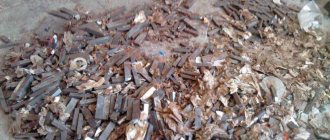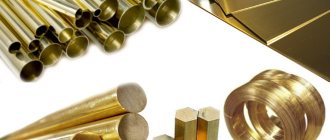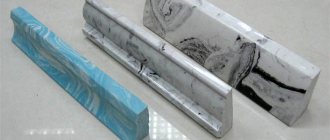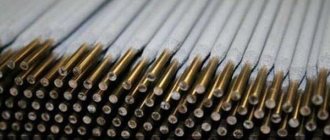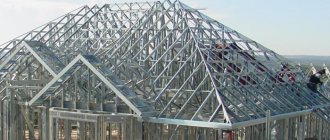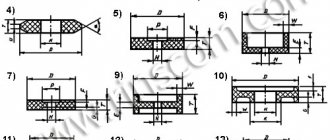Properties and characteristics of zinc and zinc alloys
The characteristics of zinc alloys are largely determined by the properties of zinc. This metal is bluish in color, is not found in its pure form, and usually contains impurities that change its properties. Pure metal is obtained as a result of several reactions.
Zinc has the following chemical properties:
- When heated, it reacts with hydrogen sulfide and water to release hydrogen.
- Does not react with nitrogen and carbon.
- It reacts with alkalis to form zinc acid salts - zincates.
Zinc is a very durable material. Its ductility increases when heated. If it is heated by more than 210 degrees, this may change its shape. At low temperatures the substance melts.
What does zinc alloy look like?
The amount of impurities depends on the methods of metal extraction, the characteristics of its processing and the zinc grade. Most often you can find impurities in the form of nickel, chlorine, fluorine and lead. Usually, when creating zinc alloys, pure zinc is used, since the presence of impurities degrades the quality of the material:
- tin makes the alloy too brittle and brittle;
- in the presence of cadmium, the ductility of the material decreases;
- lead increases intercrystalline corrosion of the material and promotes its dissolution in acids;
- the presence of iron increases the hardness of alloys, but reduces their ductility;
- Arsenic causes the alloy to become brittle and non-ductile.
Therefore, to improve the characteristics of zinc alloys, zinc is first purified from impurities. And then they use pure metal, which is alloyed with various components.
Advantages and disadvantages
Most zinc alloys have the following advantages:
- they are very durable and are not damaged by mechanical stress;
- resistant to corrosion;
- have good casting qualities and can be used to create even small elements;
- Over time, they practically do not age.
However, even small amounts of impurities worsen the characteristics of the alloy. They lead to a decrease in melting point, swelling, and contribute to the appearance of cracks. Therefore, zinc alloys must be created in compliance with all technologies, and the amount of impurities in them should not exceed 0.005%.
Many people ask whether zinc alloys darken or not? This is another drawback of the material. Zinc alloys may darken over time. Moreover, the darkening usually spreads over the entire surface of the material. This is caused by the formation of an oxide film on the surface of the material. It forms at room temperature after contact with air or water. Therefore, to avoid this, electroplating is required.
Repair of silumin products
Silumin is not resistant to shock loads, therefore, it can be subject to various types of mechanical damage. After impacts or falls, silumin products may develop cracks and chips. The silumin repair technology has some features.
Welding
It will not be possible to cook silumin with conventional electrodes, because... When the temperature rises, an oxide film appears on the surface of the product, preventing the parts from joining. Therefore, welding work must be carried out using tungsten electrodes and specialized solders. Work order:
- the surface of the product is degreased and securely fixed;
- the surface of the alloy is heated to 220 °C, while the part is placed on a steel pad to remove heat;
- a weld is made.
Welding work related to silumin requires certain skills and dexterity; without experience, it will most likely not be possible to complete a weld the first time.
Soldering
Products that are not subject to stress can be repaired by soldering at home. Work can be done with a powerful soldering iron or gas torch. It is advisable to protect the surface around the work area with metal pads. At the soldering site, the alloy is heated to 600 °C. For a high-quality result, special solder (for example, ER4043) and flux (Castolin 190 Flux) are required.
Glue
Aluminum glue is commercially available today; it can be used to repair parts that are not subject to stress. The gluing process is simple:
- the glue is diluted to the desired consistency;
- the gluing area is cleaned of dirt and degreased;
- glue is applied to the parts, after which they are connected and placed under pressure for a day.
Cold welding
Cold welding for silumin is of two types:
- the components are in two tubes, the contents must be mixed according to the instructions;
- a block or rod that is somewhat reminiscent of plasticine.
Before using cold welding, the surface of the part is cleaned and degreased, and excess irregularities and roughness are removed. After preparing the surface, the crack or chip is filled by cold welding and joined with slight pressure. In this case, you should not use a press or put too much pressure on the product.
Types of zinc alloys
Zinc can be alloyed with various substances, which will determine the properties of the resulting material. Alloying pure zinc with copper, aluminum and tin can improve its performance. The resulting composition will be of higher quality than the pure substance.
Copper and zinc
The copper-zinc alloy is called brass. This alloy has been known for a very long time. It was first made by alloying zinc ore and copper. It was only in the 18th century that an alloy of copper and zinc metal was first created.
Moreover, both components can be taken in different proportions. As a result, several types of brass are distinguished:
- Green. Contains 60% copper and 40% zinc.
- Golden. It contains 75% copper and 25% zinc.
- Yellow. Contains 67% copper and 33% zinc.
Brass is an alloy of copper and zinc.
Brass lends itself well to pressure processing. It is characterized by high mechanical properties and good corrosion resistance. But in air, in salt water and carbon dioxide solutions, brass is unstable and quickly becomes covered with a dark oxygen film.
Externally, brass looks more beautiful than copper and is characterized by better corrosion resistance. But as the temperature rises, the intensity of corrosion also increases. It can be triggered by high air humidity, the presence of ammonia or sulfur dioxide. Therefore, to prevent corrosion, the material is subjected to low-temperature firing.
Brasses do not lose their properties when the temperature drops. This allows them to be used as a structural material. But at high temperatures (more than 200 degrees), phenomena of brittleness of brass can be observed.
Tin and zinc
The alloy of zinc and tin is characterized by high protective properties. Does zinc alloy with tin rust or not? This material is very resistant to corrosion. An alloy with 20-25% zinc and 75-80% tin has the best anti-corrosion properties. Therefore, it can be used in conditions of high humidity, and its appearance will not deteriorate over time. The higher the zinc content in the alloy, the lower its corrosion resistance. If the alloy contains 50% or more zinc, its corrosion resistance is close to that of pure zinc.
The alloy of tin and zinc has the following advantages:
- It is very ductile and can be easily soldered.
- The polishing of the deposit lasts for a long time.
- Has high corrosion resistance.
Due to the presence of the above properties, an alloy of tin and zinc is usually used in the electrical and radio industries. Products made from it are very durable and resistant to external influences.
Aluminum and zinc
Most often, an alloy of zinc, aluminum and copper is created, which is called TsAM. It also contains a small amount of magnesium.
This alloy has a low melting point and is easy to cast. Products made from it are very durable and resistant to the environment.
There are several high-quality zinc-aluminum alloys, which are designated TsAM 4-1, TsAM 4-3, TsAM 10-5 and others. They contain approximately the same amount of aluminum, but different amounts of magnesium, nickel and copper. The cost of an alloy of aluminum and zinc is lower than that of tin and zinc. Therefore, products made from it are much cheaper.
Marking
Silumin can be marked in various ways. The international ISO system imposes certain requirements on alloys. Let's look at some brands as an illustrative example:
- AK 15. The letters “A” and “K” correspond to the components: aluminum and silicon, respectively. The number in turn indicates the percentage of the second most important component in the alloy;
- AL 9. The letter “L” in this case indicates the presence of lithium in the composition.
Sometimes the percentage value of another component, which is included in large quantities in the alloy, may be added to the marking, for example:
AK 15 Ts8. “Ts8” means that the alloy contains 8% zinc.
The Aluminum Association system has been created for the international market. When using this system, a four-digit code is used, in which the first digit is “4” (indicates the alloying system), the second digit carries the serial number of the alloy modification, the third and fourth are the composition of the alloy and information about its purity. In the case of using an experimental casting, an “X” is added to the marking.
In the post-Soviet space, GOST is more often used for marking; in this case, the alloys will also be designated by a four-digit code, for example, 1319. In this case, the number “1” at the beginning indicates the main element - aluminum. The second number indicates the alloying system, and the subsequent ones indicate the grade and modification of the alloy.
Scope of application
Zinc alloys are widely used. They are used in the following industries:
- In the automotive industry. Door handles, mirrors, and parts for car interior decoration are made from zinc alloys.
- When creating jewelry. Zinc is alloyed with gold, thereby increasing its ductility and malleability. This makes it easy to connect small parts to each other.
- In medicine. Zinc alloys are used to make medical furniture and devices. And zinc oxide is a good antiseptic, so it is added to various ointments and medicines.
Zinc alloy is used in automobile manufacturing
. Thus, zinc and its compounds are used in many fields. But the substance is most widely used in the automotive industry.
Types of zinc alloys by purpose
According to their intended purpose, zinc alloys can be of several types:
- Deformable. 15% - aluminum, 5% - copper, more than 1% - magnesium. It is made in the form of sheets or rods. The properties are similar to brass.
- Foundries. They are made by adding 3-4% copper and aluminum to zinc, as well as 0.05% magnesium. They have good fluidity. Therefore, they are manufactured through injection molding or mold casting.
- Anti-friction. They contain 10% aluminum, 5% copper and 0.1% magnesium. Manufactured by injection molding. They have a low coefficient of friction and are used in the automotive industry.
- Solders. They are used for soldering aluminum parts. Usually include impurities - metals. This increases their strength.
- Typographic. They contain 7.5% aluminum, 2% magnesium and approximately 4% copper. Such alloys are very durable and cast well into molds.
- Protective. They contain no more than 1% aluminum and a tiny amount of silicon and magnesium. Resistant to corrosion even in damp environments. Therefore, such alloys are used as protective materials.
Zinc alloys have proven themselves well and are widely used. But when creating them, proportions must be accurately taken into account, otherwise poor quality material will be obtained.
Basic concept of amphotericity
What metals and non-metals are is not difficult to understand. Metals have reducing properties and give up electrons in a chemical reaction. At the same time, metal hydroxides are bases. Nonmetals, on the other hand, are oxidizing agents and take away electrons. Non-metal hydroxides are acids.
Source
Amphoteric compounds can exhibit both oxidizing and reducing properties depending on the reaction medium. Hydroxides of such atoms can act as acids or bases.
Zinc alloy in jewelry
Externally, zinc alloys resemble noble metals. Therefore, they are used in costume jewelry to create inexpensive jewelry. Zinc alloy jewelry looks expensive but is easy to create.
Is zinc alloy harmful? In fact, it has no effect on the human body. But, nevertheless, it is better to purchase good quality jewelry. Usually, a special alloy is used to create jewelry, which is called costume jewelry. The most commonly used is brass or an alloy with aluminum. Externally, such products resemble gold and silver.
Is zinc alloy harmful in jewelry? No, so you can safely buy products made from it. After all, if it had a negative impact, making jewelry from it would be prohibited.
Thus, zinc and zinc alloys are widely available. They are used in medicine, automotive industry and even in jewelry. These are high-quality and sustainable materials that practically do not change under the influence of environmental conditions.
Silumin production
Metallurgy is constantly developing, new technologies are emerging, and old technical processes are being improved. There are two ways to obtain the alloy - silumin:
- extract metal for starting materials from ore, but such a mixture will have a large amount of foreign impurities;
- When thermal power plants operate, ash remains as a waste, from which the desired alloy can be made.
In addition, a mixture of aluminum and silicon can sometimes be found in nature, in particular in bauxite ore, but a high-quality alloy suitable for use in production can only be made artificially.
